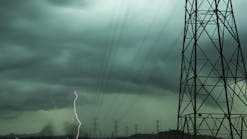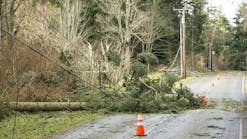A variety of emails cross my inbox over the course of a day. Some grid events spark a lot of interest, which happened with all the news about Electric Reliability Council of Texas’ emergency in mid-February this year. At first, the comments were general in nature, but as ERCOT’s troubles mounted, things changed quite a bit. The comments got sharper and more pointed.
In the aftermath of the events taking place from Feb. 14 through Feb. 17, the ERCOT leadership made a series of statements. One quote caught some attention: The Texas power grid had come within four minutes and 37 seconds of total collapse. They went on to say that had the system collapsed, it would have required what is called a “black start” of the entire ERCOT system. Furthermore, the resulting blackout could have lasted weeks or even months: Rebuilding a grid from scratch takes time.
Questions Mount
With the statement about ERCOT collapsing, skepticism grew. The emails asked about the condition of ERCOT’s grid. Could it really have collapsed or was this an attempt to shift focus off of how badly the extreme weather event was managed? I must admit those thoughts had also crossed my mind, so it seemed like a good subject to investigate.
As luck would have it, I’m a member of a group called the “Friends of The Texas Synchrophasor Network.” It’s an informal grouping of educators, engineers, and people generally interested in the behavior of a grid as more renewables are added to it. It was started by a friend of mine, Dr. Mack Grady, who is a professor of electrical engineering at Baylor University.
Many years ago, Dr Grady set up a cluster of synchrophasor monitoring units at various locations on the grid. These devices measure the instantaneous voltage, current, and frequency of the transmission grid in Texas. Whenever something interesting happens gridwise, Dr. Grady sends out some slides with detailed graphs made up from the data of the synchrophasor network.
The latest slide came in a few days ago and was a very detailed picture of ERCOT’s description of the events on Feb. 15 with an overlay of ERCOT data and synchrophasor data on top of it. After reviewing the slide, I can say the short answer is yes, ERCOT did come within minutes of collapsing.
But I’m sure that isn’t a sufficient answer for the majority of my technically astute email questioners and readers. How about the fact that about 356 of ERCOT’s generators were knocked offline? That’s nearly half of ERCOT’s installed generating capacity, and keep in mind this was happening while the load was soaring to a new winter peak demand. In tangible terms, 52,277 megawatts (MWs) out of 107,514 MWs of ERCOT’s total installed capacity was offline. That’s a good argument, but I’m sure that some of our more sagacious readers still want more facts. So let’s take the deeper dive into the data of the events.So What Really Happened
On the evening of Feb. 14, the dynamics of the situation started becoming critical. Around 17:00 hours the recorded demand of 69.1 gigawatts (GWs) was reached. This was a problem since ERCOT’s planners had forecasted a winter peak of 57.7 GWs. At 17:20, multiple transmission outages were taking place due to icing.
This wasn’t good for the ERCOT grid’s ability to support that, building record load, and the situation worsened as the evening wore on. By 23:32, the spinning reserves on the system were less than 3,000 MWs. This triggered the issuance of a Control Room Advisory, and market participants were notified. Things just kept getting trickier!
At 00:15 hours of Feb. 15, ERCOT issued an EEA (Energy Emergency Alert) Level 1. An L1 alert meant that Physical Responsive Capability (PRC) criteria had dropped to less than 2,300 MWs and were not expected to recover within 30 minutes. This was followed by an EEA L2 alert that was issued at 01:07.
The L2 alert was a reaction to the PRC criteria dropping below 1,750 MWs. A short time later (01:20) the system moved to an L3 condition and the alert was issued. An EEA L3 signifies the PRC criteria was less than 1,000 MWs and the situation was nastier. This required more load to be disconnected to prevent system shutdown.
Dropping Frequencies
Around 01:33 hours the system’s frequency moved to center stage. Too little generation vs. load, and the system frequency decreases, which was exactly what was happening. For the record, large shifts in system frequency can damage generators and other equipment. There is also an issue with the generators’ and transformers’ volt-per-hertz limits, but I’m not going into that. Let’s just say exceeding these limits isn’t good.
All of this means that when ERCOT’s normal system frequency was starting to drop below the 60 Hz point it got everyone’s attention. By 01:45 the system frequency was nearing 59.86 Hz and more load shedding was ordered. Unfortunately, ERCOT continued to experience generation outages and the system frequency continued to decline. A major low system frequency event took place about 01:50 hours, with the system frequency dropping to 59.4 Hz.
Hitting a system frequency of 59.4 Hz or going below is an important milestone because of the protection scheme known as generator under frequency ride-through. This protection scheme has several trigger points, each with a progressively shorter countdown. But for the Feb. 15 events, ERCOT’s operators were able to keep the system frequency between 59.4 Hz and 58.4 Hz bandwidth. This is important because when the system entered that band, a nine-minute countdown begins.
On the Brink
With the countdown running, successive generation tripping events caused the system frequency to drop to its lowest point of 59.302 Hz (01:52). At that point, another of ERCOT’s safety protocols, the UFLS (under frequency load sheading) scheme kick in. The UFLS system dropped about 6,500 MWs of load over the next couple of minutes.
Slowly, all of these efforts improved the situation and the system frequency finally started increasing. It had taken four minutes and 23 seconds of nonstop work for ERCOT personnel to improve the system conditions for the system frequency to move above the critical 59.4 Hz point.
The countdown stopped with four minutes and 37 seconds left on the clock. Had the clock run out, ERCOT’s generator under frequency ride-through protection scheme would have tripped off the remaining generation. The entire Texas power grid controlled by ERCOT would have collapsed and approximately 26 million customers would have been without power.
That’s where the headlines saying ERCOT was four minutes and 37 seconds from collapsing came from in all its details! Fortunately, the efforts of ERCOT’s personnel stopped the system frequency from dropping further. Their efforts got the system frequency to move above the 59.4 Hz limit before the clock ran out.
What the men and women of ERCOT did was not an easy task. Their efforts kept the power flowing and saved their grid to operate another day. During the period between 01:15 and 02:30, in round numbers, the load dropped from 65 GWs to 53 GWs (18.5%) and the online generation dropped from 66 GWs to 56 GWs (15.2%).
Without the Herculean effort of the utility workers, ERCOT’s Texas power grid would have been in the dark for many weeks if not months after the big freeze. And that reminds me, there were a couple of other related questions in my email.
What’s Black Start
Several reports mentioned the collapse of the grid would have required a “black start” of the power system. This was a new term for a lot of people not involved with this aspect of our power delivery system. I was asked what black start meant and why would it take so long to do.
In the simplest of terms, it’s a one-step-at-a-time process for restoring an electric grid or power station from a total or partial shutdown (de-energization). Some power plants have generators that can boot-strap themselves. Others require black start diesel generators or large storage batteries. Modern voltage source converter stations have black start capability too, which is a plus for converter owners.
Usually a grid operator has a plan and several black start capable generators. They also have developed a procedure to bring these units online and rebuild the system. It is a slow, labor-intensive process that requires a great deal precision and experience to accomplish.
Interestingly, there is a reference saying ERCOT has a black start plan, but it has never been used since there has never been a system-wide blackout. I wonder if that means there haven’t been any drills? There’s also another reference that said there are 13 units capable of black start operations in ERCOT, but six of those units experienced outages because of the extreme weather.
There are going to be a lot of studies, investigations, and inquiries about these events. I can’t wait to see where these probes will lead as more of the story develops.
Gene Wolf started his career as a substation engineer for Kansas Gas and Electric, retired as the principal engineer of Stations for Public Service Company of New Mexico, and founded Lone Wolf Engineering, LLC, an engineering consulting company.



